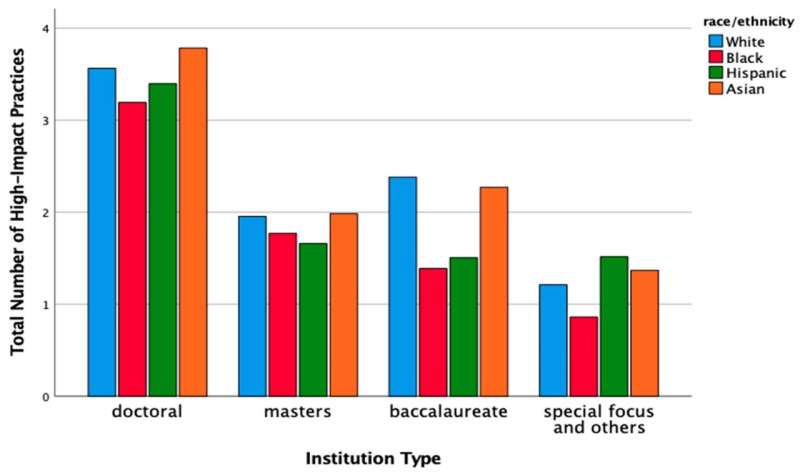This article has been reviewed according to Science X's editorial process and policies. Editors have highlighted the following attributes while ensuring the content's credibility:
fact-checked
trusted source
proofread
Study examines educational and career disparities among minoritized students

New research from the University at Buffalo offers groundbreaking insights into the strategies that help students from underrepresented groups succeed academically and in their careers.
The study, published in Trends in Higher Education, dives deep into the disparities in education and career outcomes for minoritized student populations, and focuses on what are known as high-impact practices.
HIPs are teaching and learning strategies that have been shown to improve student success, particularly among students from underserved backgrounds. These practices, like internships, studying abroad, research and volunteer opportunities, and first-year seminars, are meant to challenge students to think deeply about the material they are learning, and to apply it to real-world problems.
"Our study illustrates the transformative power of high-impact practices when effectively leveraged, offering a roadmap for educational institutions to forge pathways of success for minoritized students," says Jaekyung Lee, Ph.D., professor in UB's Graduate School of Education, who led the study.
The study tracks four-year college students' learning opportunities in the U.S. towards bachelor's degree completion followed by job employment or graduate/professional school enrollment.
Despite the expansion of access to higher education over the decades, significant disparities in college graduation rates and career outcomes persist along racial and socioeconomic lines.
The study leverages data from the Beginning Postsecondary Students (BPS) study and qualitative interviews to shed light on the mechanisms through which HIPs can foster or hinder success for minoritized students.
The findings uncover the unequal distribution and effectiveness of HIPs across different institutional types and their impact on bridging the college completion and career success divide for minoritized students.
"By identifying and addressing the inherent inequities in the distribution and implementation of High-Impact Practices, we unlock the potential to create a more equitable and inclusive educational landscape," says study co-author Namsook Kim, clinical assistant professor in UB's Graduate School of Education.
The research positions UB at the forefront of addressing educational disparities and advocating for systemic changes that promote equity and inclusion in higher education.
Key findings of the research indicate that racial and socioeconomic inequities in HIP participation are prevalent. The qualitative component of the study provides deeper insights into the lived experiences of students, highlighting both the challenges and transformative potentials of HIPs.
"Our findings present a compelling case for the strategic use of HIPs to mitigate institutional inequities and support the success of all students, particularly those from minoritized backgrounds," says Lee.
The study's implications extend beyond academic circles, offering actionable insights for policymakers and educational leaders committed to fostering an environment where every student has the opportunity to thrive.
"This study not only contributes to our understanding of the barriers to equitable educational outcomes but also offers evidence-based recommendations for institutions seeking to improve the effectiveness of HIPs," Lee said.
More information: Jaekyung Lee et al, What High-Impact Practices Work for Minoritized Students? Institutional Inequities in College Learning Opportunities and Outcomes, Trends in Higher Education (2024). DOI: 10.3390/higheredu3020011
Provided by University at Buffalo





















